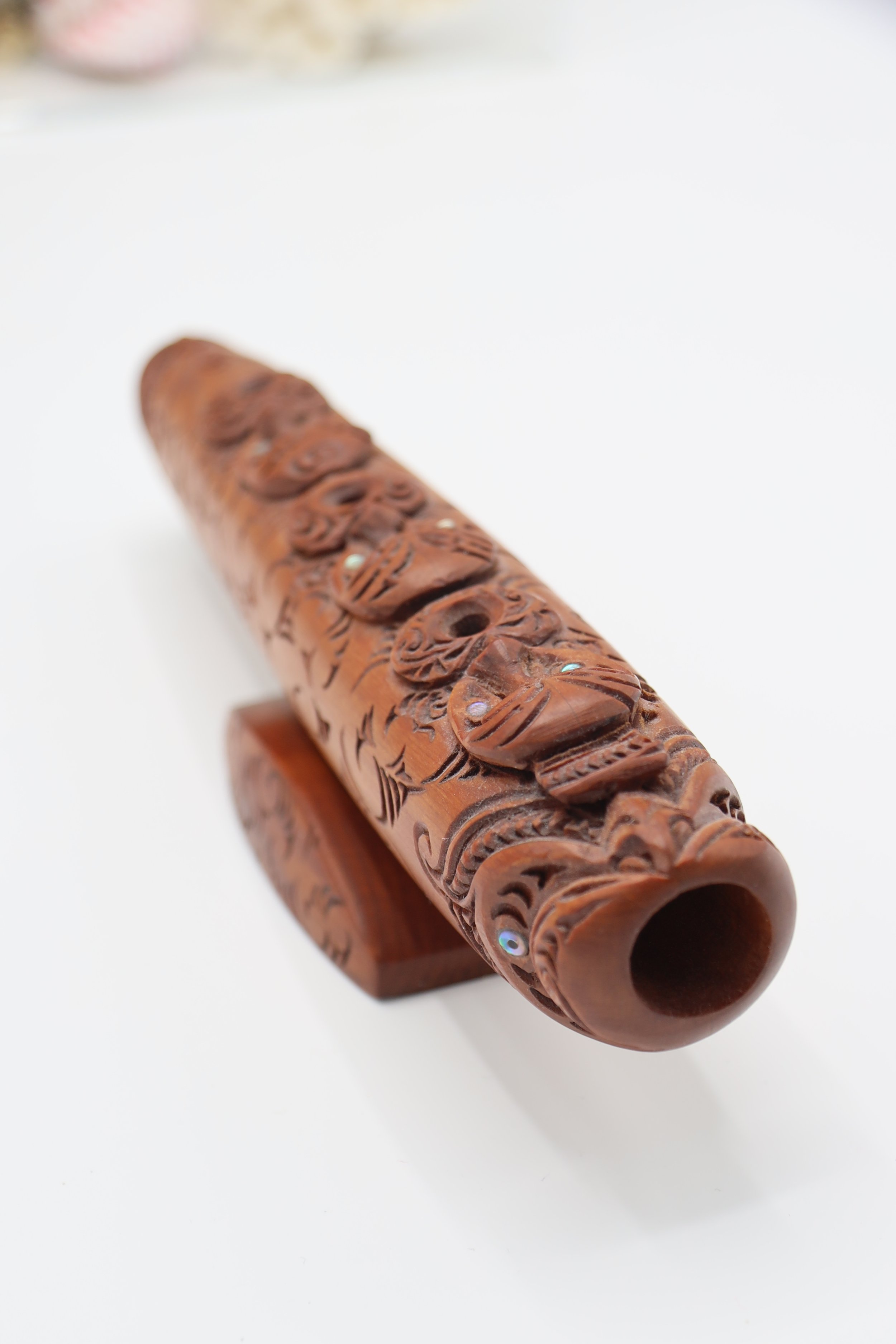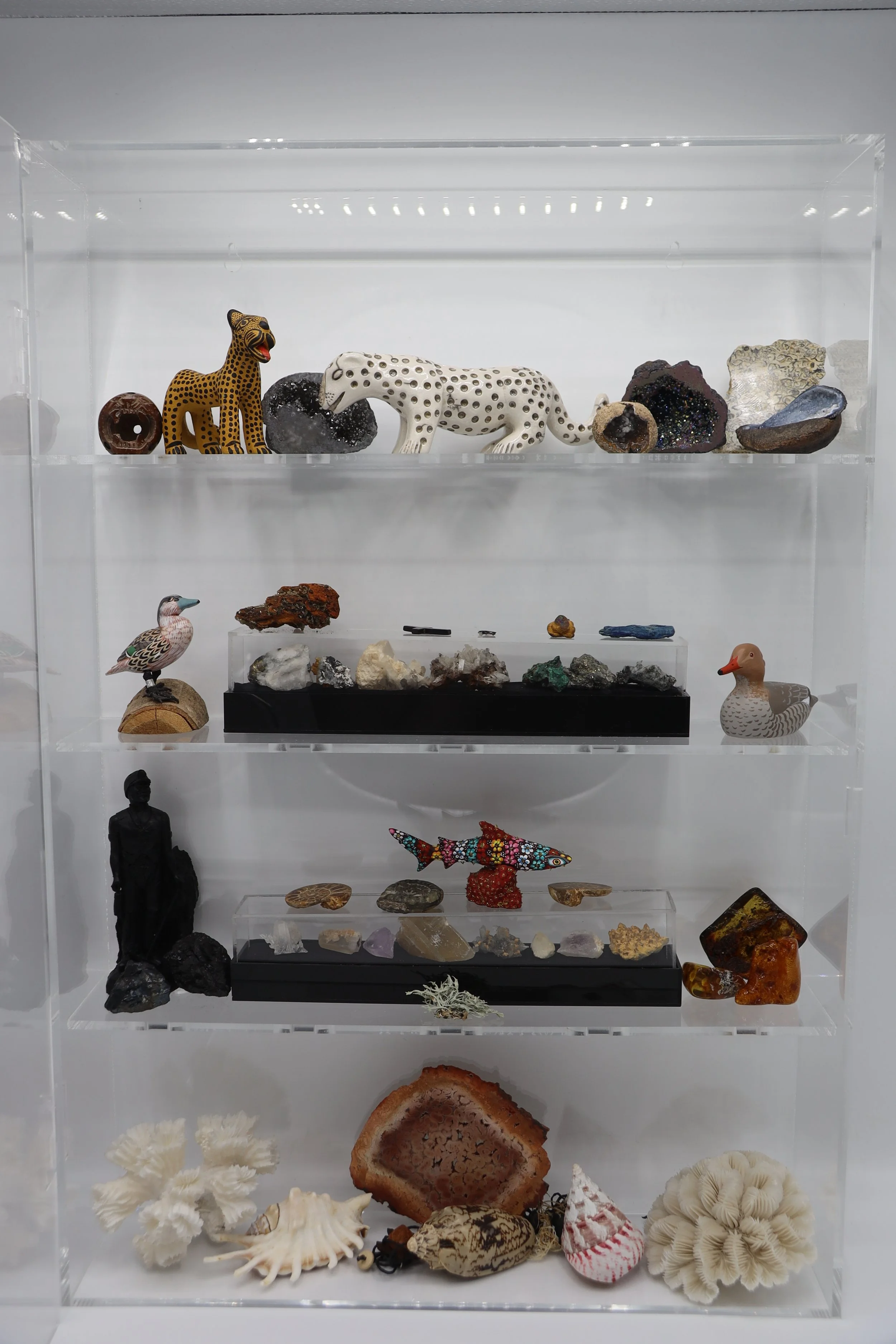
Museum Rooms Cabinets of Curiosities
“The important thing is not to stop questioning. Curiosity has its own reason for existing.” – Albert Einstein
Museum Rooms - Cabinets of Curiosities
A very Victorian invention - reimagined
Photo Credit: Museum original - Ganesh StatueWhere else will you find an Ethiopian lip ring next to a tube of water from the exact Geographical North Pole. A giant forest ant, or a Megladon tooth? Or how about some fossilised Beaver Poo? or a speedo from a Mk9 Spitfire, next to ??
The cabinets of curiosities are one of the stars of the show of the museum, bits and bobs from around the world displayed randomly in beautiful modern acrylic cases for you to marvel at, and enjoy. Each case has a full description of each item, which date from 3.6 million years BC right up to the 21st century!
We have 10 cabinets - each with a vague theme of travel memorabilia and curiosities. There are all types of materials, furs, bone, ceramics and metals representing over fifty years of travel and 150 UN + Countries and Territories. The Cabinets are regular refreshed and moved around, with new items from our archives.
Focus on Objects
-

New Zealand - MĀORI Flute
Item details
Name. - Koauau (flute)
Production - known; carver; late 20th century
Classification - wind instruments
Materials - wood - mother of pearl
Techniques - woodcarving
Dimensions - Overall: 33mm (width), 195mm (length), Weight 85 grams (flute only)
Overview
The koauau is a traditional 3 hole Maori mouth flute usually made from native woods with a soft inner pith that was burnt-out using hot embers. This beautiful example came from the South Island of New Zealand and features mother of pearl eyes on the human forms and fish. It is very hard to play! But the sound was amazing for those who have mastered the art. You are welcome to try our flute! We have another carving my the same hand in our collection.
One of the interesting things about this item is that the artist has even carved the top of the base - which you can’t even see when the flute sits on - that’s attention to detail!
-

Japan - Inro Case
Item details
Name. - Inro Case
Production - unknown; carver; Edo Period
Classification - Samurai - Case for small objects
Materials - wood - gold leaf - lacquer
Techniques - woodcarving and Laquer work
Dimensions - Overall: 550mm (width), 600mm (length), - 5 segments with Netsuke & Jade ball.
Overview
The fine 5 segment into case was used by Japanese men (Kimono’s had no pockets) and it was suspended from their sash via a silk cord and netsuke (often elaborately carved and now collected in their now right). The photo shows the case in it’s segmented form and each compartment would have used for something of value such as medicines (herbs) or similar. The scene is of a traditional Japanese boat with reeds in gold leaf, The netsuke (toggle) features temple scenes and a jade ball is used to hold the segments together.
-

Geodes and Sulphides
Item details
Name. - Natural Minerals
Production - Earth
Classification - Minerals
Materials - Titanium, niobium, Sulphide
Techniques - Natural
Dimensions - Iron Pyrite? Sulphide 155gram 600mm x 550mm Titanium Geode 55 gram 650mm x 450mm.
Overview
The brightly coloured rainbow coloured quartz geode on the left is probably titanium and niobium - we also have a plain titanium geode in our minerals collection. Both titanium geodes were acquired in Slovenia - but this is not probably where they are from, with Russia or Kazakstan being the most likely destinations.
We need you help?
If you know your feldspars from your breccias or your bornites from your cinnarbar’s then drop us line on our email and maybe you can help use identify our museum minerals and rocks?
The Sulphide is a mystery to us - it looks like a Tennantite with spherical crystal growths, but we really don’t know. It is heavy for its size at 155 grams, but also just as easily be iron pyrite - over to you!





